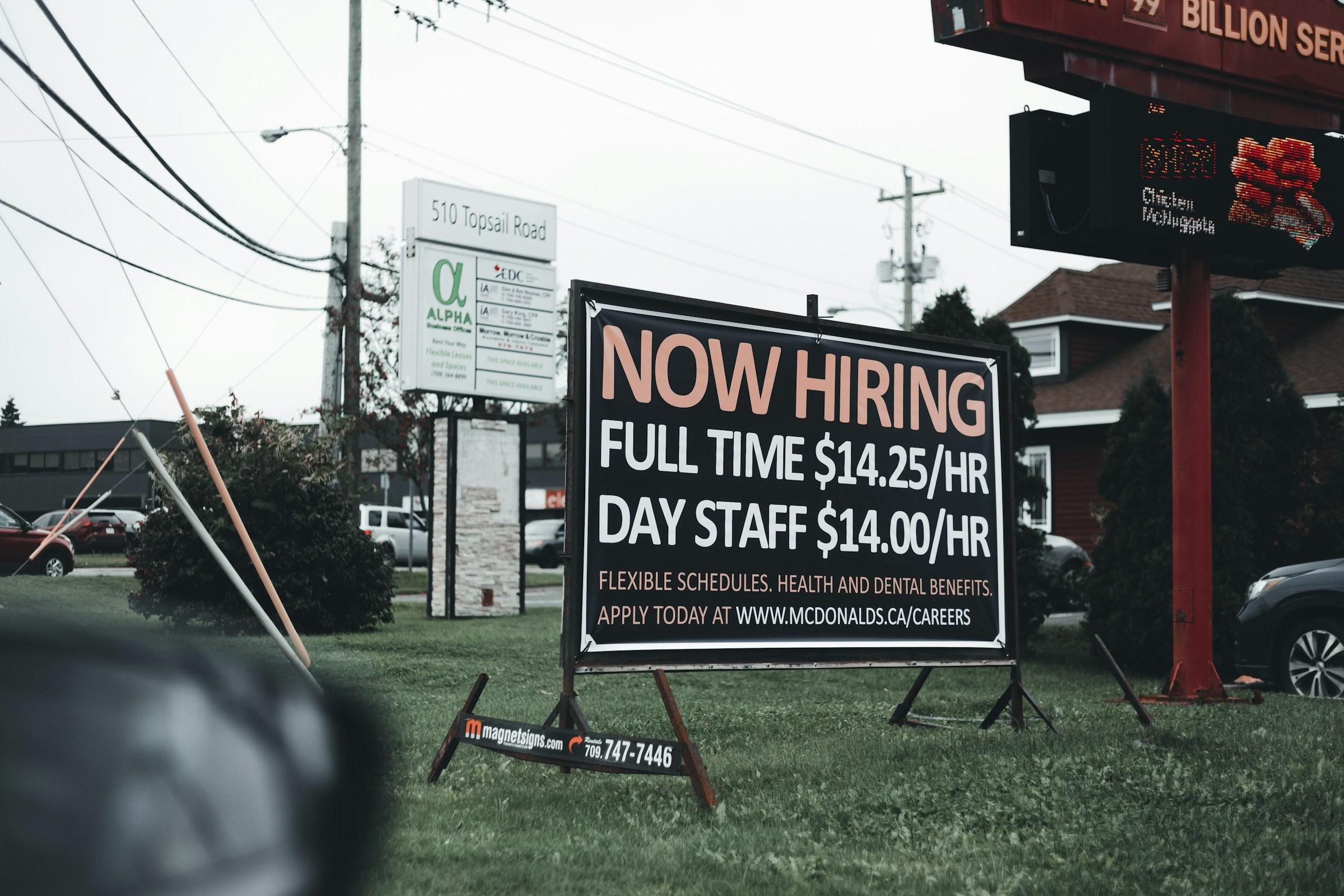Career development sits in a strange place in board conversations. It is often framed as a culture initiative or a retention perk. That framing is incomplete. When viewed through an institutional lens, career development is a mechanism for converting payroll into productive capacity with lower volatility. The question is not whether people want opportunities to grow. The question is whether firms and governments are structuring pathways that compound skills fast enough to keep pace with technology cycles and trade exposure. That is where the real costs and the real returns sit.
The macro rationale is straightforward. Economies expand when capital deepens and when labor quality rises. The former depends on investment. The latter depends on learning and on credible ladders for mobility. Career development is the operating system for that second engine. It embeds skill acquisition into daily work, translates capability into role progression, and signals to the market that the organization can absorb new tools without permanent productivity shocks. Firms that treat it as a line item to trim during slower quarters are implicitly accepting higher future costs in the form of hiring premiums, integration delays, and strategy drift.
It is useful to separate three layers that are often conflated. The first is skill formation, which is the conversion of time and training spend into verified capability. The second is role progression, which aligns that capability with responsibility and pay over time. The third is market signaling, which is how an internal ladder translates into external credibility for both the firm and the worker. Where these layers are misaligned, organizations accumulate frustration and churn. Where they are aligned, the system becomes self financing because productivity gains offset the investment in learning.
Consider the link to technology adoption. New software and data tools rarely fail because of features. They fail because the organization cannot reconfigure tasks and incentives fast enough to harvest the benefit. A credible development pathway reduces that friction. When employees see that reskilling moves them into better roles within a clear timeframe, they are more willing to switch workflows, document tacit knowledge, and retire legacy processes. The adoption curve steepens, the payback period shortens, and leadership does not need to rely on coercive compliance. The outcome is not only higher output per worker. It is a more elastic labor system that can absorb shocks without chronic morale damage.
There is also a balance sheet angle that executives tend to underrate. Recruitment is capricious and carries integration risk. Internal development, if structured well, is a hedge against talent market volatility. It allows firms to sequence hiring strategically and concentrate external search on true gaps. This is not a romantic argument for promoting from within at all costs. It is an allocation argument. Every ring fenced internal pipeline reduces the firm’s exposure to overheated labor segments and lowers the variance around delivery timelines. That stability becomes a source of competitive advantage when cycles tighten.
The sovereign perspective is similar but larger in scope. Jurisdictions that compress the time between education, first job, and credible upskilling tend to hold their wage floors without losing tradable sectors. The reason is simple. When firms can find or build the skills they require locally, they retain higher value functions. That anchors tax revenue and justifies infrastructure spending that further compounds private investment. Where pathways are weak, governments spend more on incentives to attract firms and on safety nets for displaced workers, while still watching productive activity migrate elsewhere. Career development policy is therefore not a soft instrument. It is industrial policy in quieter clothing.
None of this happens automatically. The most common failure is program inflation without role clarity. Many firms introduce training catalogs, tuition sponsorships, or mentorship badges without reengineering jobs to create actual rungs. The result is a library with no ladder. People learn, but their work design remains unchanged. Output does not move. Finance then labels the spend as a cost center, and the cycle resets with more skepticism the next time. The correction is direct. Start from the work. Redesign roles to reflect the tasks that will matter in the next two planning cycles. Price the productivity benefit if those tasks are done by someone more skilled. Only then design the learning path and the evaluation rubric. The cost will be clearer and the return easier to defend.
A second failure is signaling noise. Workers need to know what moves pay and progression. If performance criteria are opaque or overloaded with soft metrics, the system loses credibility and politics fills the vacuum. Firms that handle this well reduce the number of competencies, publish example work artifacts for each level, and time bound promotions to observable delivery outcomes. That does not eliminate judgment. It disciplines it. When a manager can point to a body of work and a documented rubric, the conversation shifts from personality to performance.
There is also the problem of manager capacity. The best designed pathway will collapse if the managerial layer cannot coach, evaluate, and sequence work to create learning moments. This is a structural constraint, not an HR complaint. Many organizations carry managers who were promoted on individual contributor excellence and then submerged under reporting and meeting debt. They are not trained to teach and they do not have the time to do so. The fix is not another workshop. It is workload redesign and a smaller span of control where development is a mandate. Otherwise, the pathway turns into a brochure.
Compensation matters, but not in the way many assume. Pay bands should reflect market reality and internal equity, yet the strategic lever is the timing of pay movements relative to skill acquisition and value creation. If compensation lags too far behind demonstrated capability, attrition rises and the firm essentially subsidizes a competitor’s hiring. If pay leads capability by too much, the incentive to learn drops and the organization subsidizes complacency. The right sequence ties a meaningful increment to crossing a visible threshold that the business cares about. That design teaches the workforce what the firm values and aligns learning effort with economic outcomes.
At scale, credible career development affects wage inflation dynamics. In tight labor markets, firms with strong pathways can backfill roles more quickly from internal benches, which reduces bidding wars for midlevel talent. That does not suppress wages unfairly. It smooths them by linking increases to productivity gains that the organization can measure. The external market still sets the ceiling for scarce roles, but the average case becomes more predictable. Investors tend to reward that predictability because it tightens guidance ranges and lowers the odds of execution misses that stem from people churn.
For governments, the policy choices are equally practical. Tax credits or grants tied to verified skill progression and wage outcomes create better behavior than generic training subsidies. Public frameworks that standardize role levels and credentials across sectors reduce translation loss when workers move between firms. Immigration policy that recognizes in demand skills and experience, rather than only degrees, complements internal pathways by letting firms top up where benches are thin. The strategic outcome is a labor market that can rebalance more quickly when sectors rotate.
The question of equity is not peripheral. Development systems that concentrate only on already advantaged cohorts will reinforce pay gaps and waste available talent. Transparent entry ramps, returnship programs with real conversion rates, and apprenticeship models tied to live projects expand the pool without lowering standards. The economic case is cold and clear. Untapped capability is a deadweight loss. Inclusive pathways are not charity. They are a method for finding productivity that the market pricing has missed.
One might ask whether the rise of general purpose AI reduces the need for structured development. The immediate effect is the opposite. As tasks commoditize, advantage shifts to those who can redesign roles, interpret model outputs, and integrate tools into regulated processes without breaking controls. That requires higher order skills and stronger managerial scaffolding. AI can accelerate learning if paired with clear ladders, targeted practice, and feedback loops. Without those, it becomes a shortcut that hollows out expertise and erodes trust in outputs. The presence of AI therefore raises the premium on career development, not the other way around.
It is helpful to confront an old objection. Why not hire fully formed talent and skip the investment. The answer is variance and fit. Fully formed often means formed elsewhere, under different systems, incentives, and norms. The integration cost can be high and the failure quiet. Internal development, coupled with selective external hiring, produces a workforce that knows the firm’s operating rhythm while remaining open to new practices. The equilibrium is dynamic. In frontier areas, recruit specialists. In core delivery, build and rotate. Firms that learn this balance reduce execution risk while preserving fresh perspective.
The significance of career development is therefore not only moral or cultural. It is financial and strategic. At the firm level, it converts salary expense into capability with lower volatility. At the market level, it anchors wage growth to productivity rather than to scarcity and hype. At the sovereign level, it underwrites competitiveness by compressing the time between skill need and skill supply. That is why it deserves a sober seat in budget and policy conversations. Treat it as a perk, and it will behave like one. Treat it as an allocation decision with measurable returns, and it becomes part of the system that holds an economy together when cycles turn.
If we strip the language back to basics, a development pathway answers two questions with precision. What will matter in the work over the next eight quarters. What sequence of practice and responsibility will get a person there while creating value along the way. Everything else is optics. Firms that answer these questions clearly will ship faster with fewer surprises. Economies that support them will transition more smoothly through technological change. The rhetoric around learning and culture will continue. The institutions that endure will be the ones that priced development like capital and managed it with the same discipline.














